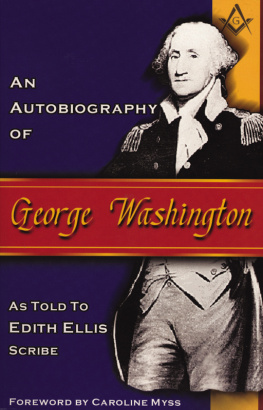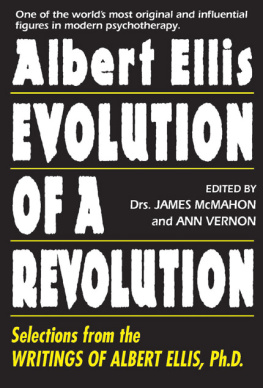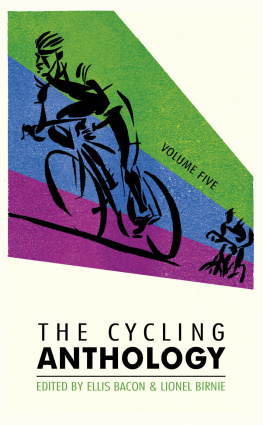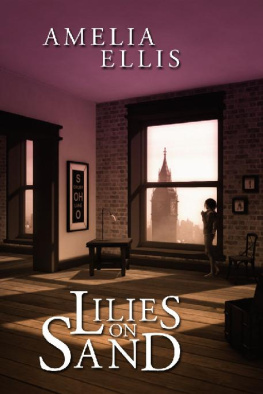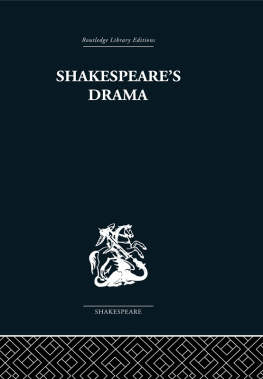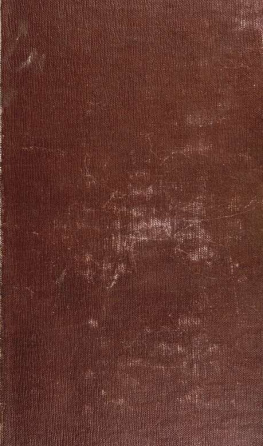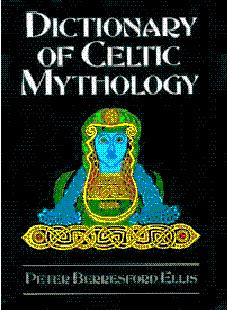Ngarino Ellis - A Whakapapa of Tradition
Here you can read online Ngarino Ellis - A Whakapapa of Tradition full text of the book (entire story) in english for free. Download pdf and epub, get meaning, cover and reviews about this ebook. year: 2016, publisher: Auckland University Press, genre: Religion. Description of the work, (preface) as well as reviews are available. Best literature library LitArk.com created for fans of good reading and offers a wide selection of genres:
Romance novel
Science fiction
Adventure
Detective
Science
History
Home and family
Prose
Art
Politics
Computer
Non-fiction
Religion
Business
Children
Humor
Choose a favorite category and find really read worthwhile books. Enjoy immersion in the world of imagination, feel the emotions of the characters or learn something new for yourself, make an fascinating discovery.

- Book:A Whakapapa of Tradition
- Author:
- Publisher:Auckland University Press
- Genre:
- Year:2016
- Rating:5 / 5
- Favourites:Add to favourites
- Your mark:
- 100
- 1
- 2
- 3
- 4
- 5
A Whakapapa of Tradition: summary, description and annotation
We offer to read an annotation, description, summary or preface (depends on what the author of the book "A Whakapapa of Tradition" wrote himself). If you haven't found the necessary information about the book — write in the comments, we will try to find it.
A Whakapapa of Tradition — read online for free the complete book (whole text) full work
Below is the text of the book, divided by pages. System saving the place of the last page read, allows you to conveniently read the book "A Whakapapa of Tradition" online for free, without having to search again every time where you left off. Put a bookmark, and you can go to the page where you finished reading at any time.
Font size:
Interval:
Bookmark:
From the emergence of the chapel and the wharenui in the nineteenth century to the rejuvenation by Apirana Ngata in the 1920s, Mori carving went through a rapid evolution from 1830 to 1930. Focusing on thirty Ngti Porou meeting houses, Ngarino Ellis traces the whakapapa of a tradition and a profound transformation in Mori art. Beginning around 1830, three previously dominant art forms waka taua, ptaka and chiefs houses declined and were replaced by churches, whare whakairo and wharekai. Ellis examines how and why that fundamental change took place by exploring the Iwirkau School of carving, based in the Waiapu Valley on the East Coast of the North Island. Six major Iwirkau carvers went on to create more than thirty important meeting houses and other works between 1864 and 1930. Mori art and architecture was not static, this book shows, but a dynamic, living entity responsive to change. Beautifully illustrated with new photography by Natalie Robertson, A Whakapapa of Tradition will be a landmark volume in the history of writing about Mori art.
Ngarino Ellis (Ngpuhi, Ngti Porou) is a senior lecturer in Art History and Museum Studies at the University of Auckland. Her publications include Te Puna: Mori Art from Northland (co-edited with Deidre Brown, 2007) and Te Ata: Maori Art from the East Coast, New Zealand (co-edited with Witi Ihimaera, 2002). Her teaching includes art crime, indigenous museology and gender. She is a principal investigator, along with Jonathan Mane-Wheoki (19432014) and Deidre Brown, on the Marsden Fund project Toi Te Mana: A History of Indigenous Art in Aotearoa New Zealand. A Whakapapa of Tradition is based on her 2012 PhD thesis.
Natalie Robertson (Ngti Porou, Clann Dhnnchaidh) is a photographic artist and senior lecturer at AUT University. Robertson has an MFA from the University of Auckland. Her research terrain is at the intersection of photographic and moving image practices with indigenous knowledge. She has exhibited extensively in public institutions throughout New Zealand and internationally, including a solo exhibition, Te Ahikroa: Home Fires Burning (2014), at the C. N. Gorman Museum at the University of California, Davis, in 2014.
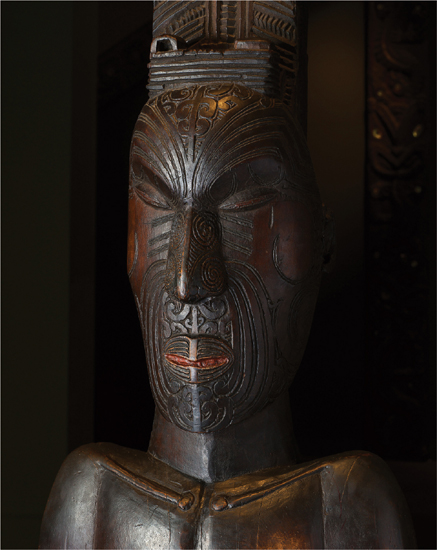
100 Years of Ngti Porou Carving, 18301930
Ngarino Ellis
with new photography
by Natalie Robertson

He whakamaharatanga tnei ki a
The Venerable Dr Hone Te Kauru o Te Rangi Kaa rtou ko
Professor Emeritus Judith Binney rtou ko
Professor Roger Neich.
He rau aroha tnei ki a koutou.
Ko Hikurangi te maunga,
Ko Waiapu te awa,
Ko Ngi Tane, me Te Whnau-a-Takimoana ng hap,
Ko O Hine Waiapu me Tai Rwhiti ng marae,
Ko Ngti Porou te iwi.
Ko Rkaumangamanga te maunga,
Ko Ipipiri te moana,
Ko Ngti Kuta te hap,
Ko Te Rwhiti te marae,
Ko Ngpuhi te iwi.

Figure 1: Reneti Church, Mangahnea Marae, Ruatria. Photograph by Natalie Robertson.
Titiro ki muri kia whakatika mua.
Look to the past to proceed to the future.
B etween 1830 and 1930 Mori art and architecture underwent a radical transformation. Three dominant art forms waka taua (war canoes), ptaka (decorated storehouses) and whare rangatira (chiefs houses) were replaced by whare karakia (churches), whare whakairo (decorated meeting houses) and wharekai (dining halls). This book, A Whakapapa of Tradition, examines how and why that fundamental transformation took place by focusing on the Iwirkau School of carving, based in the Waiapu Valley on the East Coast of the North Island. Iwirkau was an ancestor who lived around the year 1700 and who is credited with reinvigorating the art of carving in the Waiapu region. Between the 1860s and the 1920s, six major carvers of his tradition created more than thirty meeting houses and other structures. These carvers and their patrons renegotiated key concepts within Mori culture: ideas such as tikanga (tradition), tapu (sacredness) and mana (power, authority) became embedded within the new architectural forms, while established rituals were repurposed around the new buildings creation and use. The importance of whakapapa (lineage) and whenua (land) remained paramount, but these concepts were newly articulated in a way that allowed creativity to flourish.
The visual culture in the northern East Coast even before 1830 was complex and sophisticated.. They became central to hap culture and reflected the strength of leadership, both tribal and religious.
Many social practices, such as those marking significant events like marriage, began to take place in chapels rather than on the tea (area in front of a structure) of chiefs houses. And from the mid-1850s many chapels were rebuilt into larger ones, demonstrating their continuing importance within communities. During the growth in church-building from the 1840s, Waiapu Mori drew on tradition selectively, maintaining older ideas and applying them to new situations. Traditional building practices were used in the chapels both practically (in terms of structure and materials) and symbolically (in that each phase of construction was marked with karakia [prayers] and hkari [feasts]). This flexibility of approach would be drawn on again in the 1850s and 1860s when another disjuncture occurred.
In the period from 1860 to 1900, the whare whakairo became the dominant architectural structure within Mori communities. Part I of tracks how existing elements of chiefs houses, waka taua, ptaka, pou whakarae (large carved posts on the palisades of p, or fortified settlements) and chapels all contributed to the style and function of the meeting house. Part II describes the type of meeting houses built by Iwirkau carvers. This style was recognisably different from those of other iwi, and soon became a distinctive marker used by carvers from outside the region to reference the East Coast in their own work. The meeting house was not a static entity based in a timeless era but, like the chapel, became another vehicle with which to articulate change and innovation in the community.
The carvers themselves were the key transmitters of culture in this community, simultaneously retaining and breaking with tradition..
The patrons of Iwirkau carvers made deliberate choices about the type of architecture they commissioned and which artists would create it for them. They wanted to demonstrate visual links with the past, but they also defined tradition for themselves in a fluid way. Carving in particular was paramount in the creation of new buildings; ancestors were depicted in order to emphasise and reinforce whakapapa and ties to the land. Part I of focuses specifically on patronage of Iwirkau carvers in the nineteenth century. I consider the range of arts patrons, beginning with local Ngti Porou and moving outwards to other iwi and lastly Pkeh. Two case studies are presented in the last section: the building of Porourangi and Hau Te Ana Nui o Tangaroa. For both, patrons called on the concept of tradition because of specific political and cultural agendas.
Finally, the concluding chapter examines the period from 1900 to 1930 and in particular the work of T Apirana Ngata. The renovation of Porourangi (1908) and the building of Ngatas carved study (1916), St Marys Memorial Church (192526) and the Arihia Dining Hall (1930) are the four key moments here. The Arihia Hall formed the basis for one final art tradition the dining hall and thus its date of construction acts as the books cut-off point. Ngata emphasised the continuing importance of carving as a marker of identity, and acted as both artist and patron, vacillating between the two roles much as he did between tradition and modernity.
Next pageFont size:
Interval:
Bookmark:
Similar books «A Whakapapa of Tradition»
Look at similar books to A Whakapapa of Tradition. We have selected literature similar in name and meaning in the hope of providing readers with more options to find new, interesting, not yet read works.
Discussion, reviews of the book A Whakapapa of Tradition and just readers' own opinions. Leave your comments, write what you think about the work, its meaning or the main characters. Specify what exactly you liked and what you didn't like, and why you think so.

